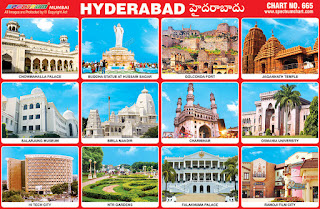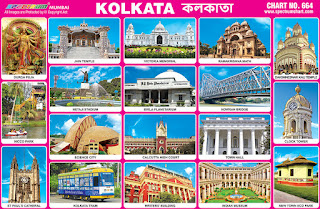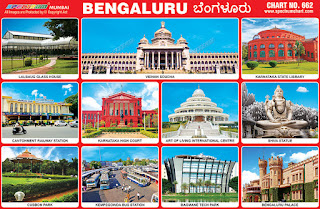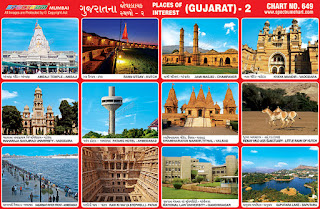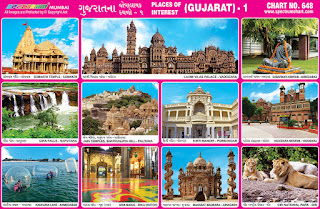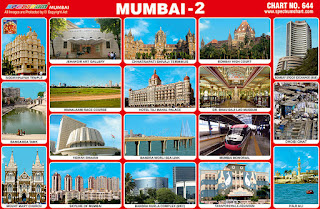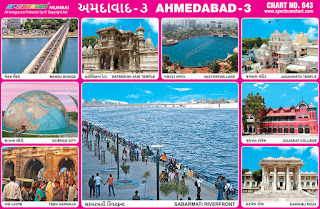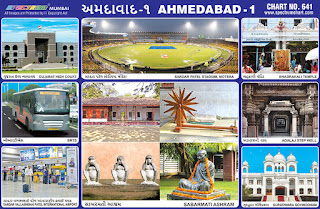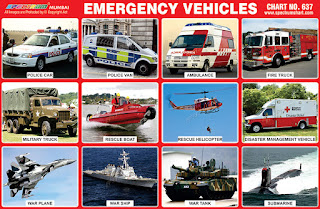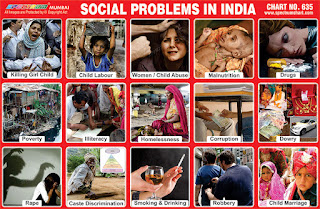1. Dr. Mokshagundam Visvesvaraya -
Mokshagundam Visvesvaraya was an Indian engineer, scholar, statesman
and the Diwan of Mysore from 1912 to 1918. He was the chief engineer
responsible for the construction of the Krishna Raja Sagara dam in
Mysore as well as the chief designer of the flood protection system
for the city of Hyderabad. He is a recipient of the Indian Republic's
highest honour, the Bharat Ratna, in 1955.
2. Dr. Dhondo Keshav Karve - Dr. Dhondo
Keshav Karve popularly known as Maharishi Karve, was a social
reformer in India in the field of women's welfare. Karve continued
the pioneering work in promoting widows' education. The Government of
India awarded him its highest civilian award, the Bharat Ratna, in
1958, the year of his 100th birthday.
3. Dr. Zakir Husain - Zakir Husain was the
3rd President of India, from 13 May 1967 until his death
on 3 May 1969. An educator and intellectual, Husain was the country's
first Muslim president and also the first to die in office. He was
also the shortest serving President of India. Zakir Husain was also
co-founder of Jamia Milia Islamia, serving as its Vice Chancellor
from 1928. He was awarded the Bharat Ratna, India's highest national
honour, in 1963.
4. Lal Bahadur Shastri - Lal Bahadur
Shastri was the Prime Minister of the Republic of India and a leader
of the Indian National Congress party. Shastri as Prime Minister
continued Nehru's policies of non-alignment and socialism. He led the
country during the Indo-Pakistan War of 1965. His slogan of "Jai
Jawan Jai Kisan" became very popular during the war and is
remembered even today.
5. Kumaraswamy Kamraj - K. Kamaraj was a
leader of the Congress, widely acknowledged as the "Kingmaker"
in Indian politics during the 1960's. In Tamil Nadu, his home state,
he is remembered for bringing school education to millions of the
rural poor by introducing free education and the free Midday Meal
Scheme during his tenure as chief minister. He was awarded with
India's highest civilian honour, the Bharat Ratna, posthumously in
1976.
6. Mother Teresa - Mother Teresa was a
Roman Catholic nun and missionary. Mother Teresa founded the
Missionaries of Charity, a Roman Catholic religious congregation,
which runs hospices and homes for people with HIV/AIDS, leprosy and
tuberculosis, soup kitchens, dispensaries and mobile clinics,
children's and family counselling programmes, orphanages and schools.
Mother Teresa was the recipient of numerous honours, including the
1979 Nobel Peace Prize.She was awarded India's highest civilian
award, the Bharat Ratna, in 1980.
7. Acharya Vinoba Bhave – Vinoba Bhave
was an Indian advocate of non violence and human rights. Often called
Acharya, he is best known for the Bhoodan Movement. He is considered
as a National Teacher of India and the spiritual successor of
Mohandas Gandhi. He was the 1st person to be selected as a Satyagrahi
followed by Nehru in Individual Satyagraha by Mahatma Gandhi. He was
awarded the Bharat Ratna posthumously in 1983.
8. Marudur Gopalan Ramachandran - Marudhur
Gopalan Ramachandran, popularly known by the initials M. G. R., was
an Indian actor, director, producer and politician who worked
primarily in Tamil films and also served as the Chief Minister of
Tamil Nadu successively for three terms. MGR is a cultural icon in
Tamil Nadu and is regarded as one of the greatest and most
influential actors the Tamil film industry ever produced. Bharat
Ratna was conferred by the Government of India (posthumously) in 1988
for his reformation activities and support from Tamil Nadu.
9. Bhim Rao Ramji Ambedkar - Bhimrao Ramji
Ambedkar popularly known as Babasaheb, was an Indian
jurist,economist, politician and social reformer who inspired the
Dalit Buddhist movement and campaigned against social discrimination
against Untouchables, while also supporting the rights of women and
labour. He was Independent India's first law minister and the
principal architect of the Constitution of India. In 1990, the Bharat
Ratna, India's highest civilian award, was posthumously conferred
upon Ambedkar.
10. Nelson Rolihlahla Mandela - Nelson
Rolihlahla Mandela was a South African anti-apartheid revolutionary,
politician and philanthropist, who served as President of South
Africa from 1994 to 1999. He was the country's first black chief
executive and the first elected in a fully representative democratic
election. In 1990, he received the Bharat Ratna Award from the
government of India.
11. Sardar Vallabhbhai Patel - Vallabhbhai
Patel was an Indian barrister and statesman, one of the leaders of
the Indian National Congress and one of the founding fathers of the
Republic of India. Through both frank diplomacy as well an option to
deploy military force, Patel would persuade almost every princely
state to accede to India. Patel's commitment to national integration
in the newly independent country was total and uncompromising,
earning him the sobriquet "Iron Man of India". Patel was
posthumously awarded the Bharat Ratna, India's highest civilian
honour, in 1991.
12. Morarji
Desai - Morarji Desai was a Prime Minister of India from 1977
to 1979. He was also the first Prime Minister to head India's first
non-Congress Government. Desai was the only Indian national to be
conferred with Pakistan's highest civilian award, Nishan-e-Pakistan.
13. Jehangir Ratanji Dadabhai Tata -
Jehangir Ratanji Dadabhoy Tata was a French-born Indian aviator and
business tycoon. He was the Chairman of Tata Sons. He became India's
first licensed pilot in 1929. He joined Tata & Sons in 1925. In
1938, at the age of 34, JRD was elected Chairman of Tata & Sons
making him the head of the largest industrial group in India. He was
famous for succeeding in business while maintaining high ethical
standards – refusing to bribe politicians or use the black market.
In 1992, because of his selfless humanitarian endeavours, JRD Tata
was awarded India's highest civilian honour, the Bharat Ratna.
14. Satyajit Ray - Satyajit Ray was an
Indian Bengali filmmaker, widely regarded as one of the greatest
filmmakers of the 20th century. Ray directed 36 films, including
feature films, documentaries and shorts. Ray's first film, Pather
Panchali (1955), won eleven international prizes, including the
inaugural Best Human Document award at the 1956 Cannes Film Festival.
The Government of India honored
him with the Bharat Ratna in 1992.
15. Dr. A.P.J. Abdul Kalam - A. P. J. Abdul
Kalam was the 11th President of India from 2002 to 2007. A career
scientist turned politician. He was involved in India's civilian
space program and military missile development efforts. He thus came
to be known as the Missile Man of India for his work on the
development of ballistic missile and launch vehicle technology. He
also played a pivotal organisational, technical and political role in
India's Pokhran-II nuclear tests in 1998. He was a recipient of
several prestigious awards, including the Bharat Ratna, India's
highest civilian honour.
16. Madurai Shanmukhavadivu Subbulakshmi -
Madurai Shanmukhavadivu Subbulakshmi was a Carnatic vocalist. M. S.
Subbulakshmi as the leading exponent of classical and semi-classical
songs in the carnatic tradition of South India. She is the first
Indian musician to receive the Ramon Magsaysay award, often
considered Asia's Nobel Prize, in 1974. She was the first musician
ever to be awarded the Bharat Ratna, India's highest civilian honour
in 1998.
17. Lok Nayak Jayaprakash Narayan -
Jayaprakash Narayan popularly referred to as JP or Lok Nayak, was an
Indian independence activist, social reformer and political leader,
remembered especially for leading the mid-1970's opposition against
Prime Minister Indira Gandhi. India's highest civilian award Bharat
Ratna was awarded to him in 1999 (Posthumous).
18. Professor Amartya Sen - Amartya Kumar
Sen is an Indian economist and philosopher of Bengali ethnicity. Sen
has made contributions to welfare economics, social choice theory,
economic and social justice, economic theories of famines and indexes
of the measure of well-being of citizens of developing countries. He
was awarded the Nobel Memorial Prize in Economic Sciences in 1998 and
Bharat Ratna in 1999 for his work in welfare economics.
19. Pandit Ravi Shankar - Pandit Ravi
Shankar was a known Indian musician and a composer of Hindustani
classical music. He was one of the best-known exponents of the sitar
in the second half of the 20th century and influenced many other
musicians throughout the world. Shankar developed a style distinct
from that of his contemporaries and incorporated influences from
rhythm practices of Carnatic music. Shankar has been considered one
of the top sitar players of the second half of the 20th century. He
was awarded with the highest Indian civilian award 'Bharat Ratna' in
1999.
20. Lata Mangeshkar - Lata Mangeshkar is an
Indian playback singer, and occasional music-composer. She is one of
the best-known and most respected playback singers in India.
Mangeshkar's career started in 1942 and has spanned over seven
decades. She has recorded songs for over a thousand Hindi films and
has sung songs in over thirty-six regional Indian languages and
foreign languages. She is the second vocalist, after M. S.
Subbulakshmi, to have ever been awarded the Bharat Ratna, India's
highest civilian honour.
21. Ustad Bismillah Khan - Bismillah Khan
often referred to by the honorific title Ustad, was an Indian
musician credited with popularizing the shehnai, a subcontinental
wind instrument of the oboe class. While the shehnai had long held
importance as a folk instrument played primarily during traditional
ceremonies, Khan is credited with elevating its status and bringing
it to the concert stage. He was awarded India's highest civilian
honour, the Bharat Ratna, in 2001.
22. Pandit Bhimsen Gururaj Joshi - Bhimsen
Gururaj Joshi was an Indian vocalist from Karnataka in the Hindustani
classical tradition. He is known for the khayal form of singing, as
well as for his popular renditions of devotional music. In 1998, he
was awarded the Sangeet Natak Akademi Fellowship, the highest honour
conferred by Sangeet Natak Akademi, India's National Academy for
Music, Dance and Drama. Subsequently, he received the Bharat Ratna,
India's highest civilian honour, in 2009.
23. Sachin
Tendulkar - Sachin Ramesh Tendulkar is a former Indian cricketer and
captain, widely regarded as one of the greatest batsmen of all time.
Sachin Tendulkar is the leading run scorer in Tests as well as in
One-Day Internationals with the combined total of 34,357
international runs to go with highest number of centuries in both
Tests (51) and ODIs (49), combined 100 international centuries, the
only play to do so. In 2014, he was awarded with the Bharat Ratna,
India's highest civilian award. He is the youngest recipient to date
and the first ever sportsperson to receive the award.
24. Atal Bihari Vajpayee - Atal Bihari
Vajpayee is an Indian statesman who was the 10th Prime
Minister of India. A leader of the Bharatiya Janata Party (BJP), he
is the first Prime Minister from outside the Indian National Congress
party to serve a full five-year term. A parliamentarian for over four
decades, Vajpayee was elected to the Lok Sabha nine times and twice
to the Rajya Sabha. On 25 December 2014 the office of President of
India announced the Bharat Ratna award, India's highest civilian
honour, to Atal Bihari Vajpayee. His birthday, 25 December, is
celebrated as "Good Governance Day".
